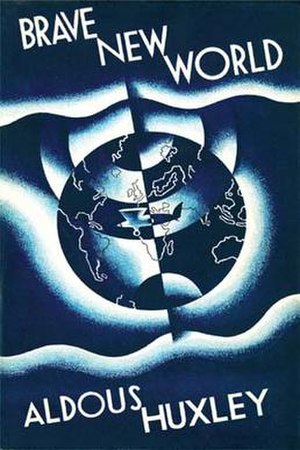
- Image via Wikipedia
The visions of tomorrow inspire the actions we take today.
Science fiction is as much a reflection of society’s deep fascination with science as it is an agent of change for its future course.
In 1984, William Gibson coined a word—“cyberspace”— and used it in a science fiction novel. At the time, few people had a concept of what such a term could mean. And yet, thanks to Gibson’s use of it, especially in his epochal cyberpunk book Neuromancer, “cyberspace” gradually gained enough cultural credence to become the de facto name for the emerging World Wide Web.
Today we unthinkingly use the word to refer to an everyday experience that didn’t even exist when Neuromancer was penned—but one which is arguably similar to Gibson’s vision of a “consensual hallucination experienced daily by billions of legitimate operators.” Of course, it’s unclear whether Gibson primed the pump for the widespread acceptance of advanced communications technologies, or if he merely pointed out the tip of an iceberg ready to emerge from the waters of a high-tech subculture.
What is clear is that science fiction plays an essential role in the dissemination and popularization of science’s most nascent and speculative concepts. In the 1980s, when we were introduced to a fictional “cyberspace,” we digested the idea to the point of banality, and in the process unwittingly prepared ourselves for massive cultural and technological change.
Does our collective dreaming, our technolust, and our romance for the stars shape the way we understand future scientific advances? More importantly, can it change the future?
In a word, yes.
Ever since the 19th-century scientific dreams of Jules Verne and H.G. Wells, science fiction has been a future-changing medium. Although its role is not necessarily to be prophetic, it often fulfills its own predictions in surprising ways. We literally live in a science-fictional world. Ideas that seemed like ludicrous fantasies in sci-fi’s “golden age” of the 1950s have long since become reality: geosynchronous communications satellites, famously dreamed up by Arthur C. Clarke; Karel Capek’s “robots,” first concocted in 1920; or cloning and neuro-enhancing pharmaceuticals, the subject of Aldous Huxley’s Brave New World from 1931.
Related articles by Zemanta
- Cyberpunk and video games [William Gibson] (kotaku.com)
- The Technology of Neuromancer After 25 Years (entertainment.slashdot.org)









